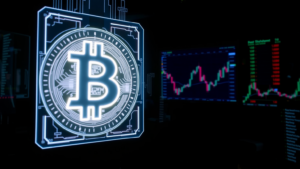XRP Faces Critical Test as Institutional Floodgates Open
The cryptocurrency landscape is witnessing a pivotal moment as Franklin Templeton, a global asset manager overseeing approximately $1.5 trillion, launches its spot XRP exchange-traded fund today. This landmark development for the digital asset arrives during turbulent market conditions, with XRP’s value having declined more than 15% in recent days, leaving numerous investors facing unrealized losses. The central question facing market participants is whether this institutional endorsement can reverse the downward trajectory or if XRP will become a textbook example of “sell the news” behavior.
Market Activity Reveals Contradictory Signals
Current trading patterns present a complex picture for XRP. The digital currency is currently changing hands around $2.15, significantly below its recent peak of $2.60. Technical indicators continue to flash warning signs, with the Relative Strength Index suggesting persistent weakness and price action remaining below crucial moving averages.
Despite these bearish technical signals, market activity remains remarkably vigorous. Daily trading volumes have maintained between $6 billion and $6.7 billion over 24-hour periods, indicating substantial investor engagement. This high activity level coincides with concerning data showing that 30% to 35% of all XRP holdings are now in loss positions—the worst reading recorded throughout 2025. This creates underlying selling pressure as investors who purchased at higher price points face difficult decisions about whether to realize losses or maintain their positions.
Institutional Adoption Accelerates Rapidly
Franklin Templeton’s new fund, trading under ticker symbol EZRP on the Cboe BZX Exchange, represents more than just another investment product. The involvement of Coinbase Custody for asset safeguarding sends a powerful message about institutional confidence in the digital asset’s infrastructure. This development forms part of a broader institutional embrace, with Canary Capital having already debuted its XRP ETF on November 13, registering impressive volume on its inaugural trading day.
The institutional momentum shows no signs of slowing. Between November 19 and 22, financial heavyweights including Bitwise, 21Shares, and CoinShares are scheduled to introduce their own XRP-focused investment vehicles. This concentrated wave of ETF launches demonstrates a significant shift in how traditional finance views digital assets, with multiple institutions establishing substantial positions in XRP simultaneously.
On-Chain Metrics Paint Bullish Long-Term Picture
Blockchain data from the XRP Ledger reveals extraordinary network activity that contrasts sharply with recent price action. Key network metrics have reportedly surged by an astonishing 500%, with daily transactions surpassing the one million threshold and payment volumes reaching unprecedented levels. These fundamental indicators suggest growing utility and adoption that isn’t immediately reflected in current pricing.
Perhaps most significantly, recent blockchain movements show approximately 149 million XRP tokens—valued at roughly $336 million—being withdrawn from centralized exchanges within a single 24-hour window. Such substantial movements typically indicate accumulation for long-term holding strategies, with investors opting for self-custody rather than exchange-based storage. This behavior often precedes price appreciation, as it reduces immediately available supply.
The Critical Juncture Ahead
The cryptocurrency now stands at a decisive crossroads. Market observers are closely watching whether the long-anticipated ETF approvals will trigger classic “sell the news” profit-taking, where prices decline following major catalyst events. Alternatively, the substantial institutional liquidity entering the XRP ecosystem through these new investment vehicles might generate sufficient buying pressure to stabilize and potentially reverse the current downtrend.
The coming trading sessions will prove crucial in determining whether XRP can capitalize on its institutional milestone or if this landmark achievement becomes overshadowed by ongoing market volatility.
Solana’s Sharp Decline: Market Correction or Buying Opportunity?
The cryptocurrency landscape has witnessed a striking divergence in recent weeks, with Solana (SOL) moving dramatically against the broader market trend. While Bitcoin and other major digital assets have regained momentum, SOL has retreated to price levels not seen in five months. Recording a 30% decline during the fourth quarter, Solana stands among the poorest performers in the large-cap cryptocurrency sector. This raises critical questions about the underlying causes and why institutional investors appear to be accumulating positions during this downturn.
Institutional Accumulation Contrasts with Retail Selling
Blockchain data reveals a fascinating market dynamic unfolding. As numerous retail investors capitulate and divest their Solana holdings at a loss—evidenced by the Net Realized Profit/Loss metric remaining negative since early November—larger players are moving in the opposite direction. One significant holder recently sold a substantial SOL position at a loss, despite having generated staking rewards from those assets.
Contrasting this retail exodus, institutional participants are strategically capitalizing on the price weakness. Reports indicate that 20 Digital Asset Trusts and 2 ETFs have been actively accumulating SOL. This clear divergence between retail surrender and institutional buying pressure suggests sophisticated investors may view the current price collapse as a strategic entry point rather than a reason for concern.
Technical Support Levels Under Pressure
Following its September peak of $253, Solana has experienced a substantial reversal. The asset now fluctuates around the $138 level, hovering dangerously close to a critical support band between $134 and $140. Market technicians caution that a decisive break below this barrier could trigger further declines toward $120. Compounding the bearish technical picture, trading volume has diminished significantly throughout the sell-off—a classic indicator of waning buyer enthusiasm.
A minor technical indicator offers a glimmer of hope: the emergence of a TD Sequential “1” buy signal suggests the current selling pressure might be nearing exhaustion.
Pivotal Moment for Market Direction
Solana faces a decisive juncture. The central question remains whether institutional buying conviction will prove sufficient to counterbalance ongoing selling pressure. Alternatively, will the asset breach the crucial $134 support level, potentially initiating another leg downward? The upcoming trading sessions will likely determine whether the current bearish trend will persist or if an unexpected reversal is imminent.
Bitcoin at a Crossroads: Signs of Accumulation Emerge Amid Market Turbulence
The cryptocurrency market finds itself navigating turbulent waters as Bitcoin, the leading digital asset, recently plunged to a six-month low below $93,000. This represents a dramatic 27% decline from its October peak of $126,000, effectively erasing all gains achieved throughout 2025. Over $600 billion in market capitalization has evaporated, triggering panic among some investors. However, beneath this surface volatility, a contrasting narrative is unfolding as major institutional players demonstrate significant accumulation activity.
Institutional Confidence Defies Market Sentiment
Contrary to the prevailing selling pressure, MicroStrategy executed its most substantial Bitcoin acquisition since July on November 17. The software company purchased 8,178 BTC for approximately $835.6 million, paying an average price of $102,171 per coin. This strategic move was primarily financed through issuing new preferred shares, including a euro-denominated series named “STRE” that raised over $715 million from European high-yield investors.
MicroStrategy’s corporate treasury now holds a staggering 649,870 Bitcoin, valued at over $60 billion. The company’s cumulative acquisition cost stands at approximately $48.37 billion, translating to a reported Bitcoin return of 27.8% since the beginning of the year. This continued accumulation signals unwavering institutional confidence in their long-term cryptocurrency strategy.
Whales Accumulate Against the Current
On-chain analytics reveal a surprising divergence in market behavior. While Bitcoin ETFs recorded outflows totaling $1.7 billion between November 3 and November 7, entities known as “Great Whales”—addresses holding more than 10,000 BTC—significantly increased their positions. These major holders added approximately 36,000 Bitcoin to their reserves, providing crucial support above psychologically important price levels.
This substantial accumulation occurring simultaneously with massive ETF outflows suggests a classic redistribution from weak to strong hands, potentially indicating an approaching trend reversal.
Federal Reserve Policy Creates Headwinds
The current market downturn coincides with a hawkish pivot from the U.S. Federal Reserve. Chairman Jerome Powell recently tempered expectations for additional interest rate reductions, emphasizing that “further reductions in the benchmark rate are not automatic.” Surprisingly robust economic data has diminished hopes for aggressive monetary easing, creating challenging conditions for Bitcoin and other growth-oriented assets.
From a technical analysis perspective, Bitcoin recently formed a “Death Cross” pattern, where short-term moving averages cross below long-term trends—traditionally considered a bearish signal. Historical context, however, reveals that such patterns have frequently appeared near market bottoms, ultimately marking favorable entry points.
Network Fundamentals Remain Robust
Despite price volatility, Bitcoin’s underlying network metrics show remarkable strength. The hash rate, measuring computational power and network security, has achieved new record highs near 1,118 exahashes per second (EH/s). Miners continue making substantial investments in expensive equipment, demonstrating clear commitment to Bitcoin’s long-term potential.
On-chain activity maintains its vigor, with average daily cryptocurrency trading volume climbing to approximately $155 billion during the third quarter of 2025—a 43.8% increase compared to the previous quarter.
Regulatory Landscape Evolves
Significant regulatory developments are taking shape globally. Japan’s Financial Services Agency (FSA) intends to classify Bitcoin and 104 additional cryptocurrencies as financial products, subjecting them to disclosure and supervision requirements comparable to traditional securities.
Concurrently, the Chicago Board Options Exchange (CBOE) is expanding its derivatives offerings. Beginning December 15, 2025, Bitcoin and Ethereum futures in the “perpetual” style will become available for trading—another milestone toward institutional acceptance.
Market Outlook and Critical Levels
Bitcoin currently stands at a critical juncture. The liquidation of approximately $19 billion in leveraged positions during the past month has generated substantial selling pressure. Long-term holders have taken profits following the record rally, while cryptocurrency equities including Coinbase, MicroStrategy, and Bitcoin mining companies have experienced severe price declines.
Nevertheless, indicators suggesting potential bottom formation are accumulating. Bitfinex analysts observe signs of capitulation among short-term holders—often precursors to trend reversals. The Federal Reserve’s interest rate decision in December will prove pivotal for all risk assets.
The combination of strong network fundamentals, continued institutional adoption, and whale accumulation supports the case for Bitcoin maintaining its long-term trajectory despite short-term volatility. The coming weeks will determine whether support between $90,000 and $94,000 holds firm or whether a deeper correction lies ahead.










XRP’s Contradiction: ETF Approvals Amid Price Decline
The cryptocurrency XRP finds itself in a perplexing situation. Just as major financial institutions are launching spot ETFs for the digital asset, its market value has entered a significant downturn. The currency has recorded seven consecutive days of losses, marking its longest declining streak since 2023. This downward movement presents a puzzling scenario: why would XRP’s price fall precisely when institutional investment vehicles are receiving regulatory approval?
Institutional Progress Meets Market Anxiety
This week marks a substantial milestone for XRP’s institutional acceptance, yet the price action tells a different story. Franklin Templeton introduces its spot ETF today, following Canary Capital’s Monday debut with $58.5 million in volume. Additional industry heavyweights including Bitwise and 21Shares are scheduled to launch their products this week.
Despite these developments, the anticipated price surge has failed to materialize. Market sentiment currently reflects “Extreme Fear” according to standard metrics. Financial experts attribute this contradictory phenomenon to settlement mechanisms—transactions within traditional exchange-traded funds don’t immediately trigger corresponding purchases of the underlying XRP assets. The T+1 settlement process creates a delay between ETF transactions and actual capital flowing into the cryptocurrency markets.
Diverging Signals: Network Activity Versus Price Action
While XRP’s market performance struggles, fundamental indicators paint a more positive picture. Transaction volumes across the XRP Ledger network demonstrate growth, and trading volume remains substantial at $4.29 billion. This creates a clear discrepancy: the ecosystem continues to expand while investor sentiment remains deeply negative.
The regulatory landscape also shows promising signs for XRP. Following years of legal confrontation with the SEC, the approval of multiple ETFs indicates growing institutional confidence and regulatory clarity. The crucial question facing market participants is when these fundamental improvements will translate into price appreciation.
Critical Juncture for XRP’s Market Trajectory
The coming days will prove decisive for XRP’s short-term direction. Either institutional logic will prevail, with expected capital inflows reversing the current negative sentiment, or the cryptocurrency will remain trapped in its bearish trend. With the Relative Strength Index reading below 29, XRP is technically considered heavily oversold. However, whether this technical condition alone can catalyze a trend reversal remains uncertain. Market observers await clear signals that institutional adoption will ultimately drive price discovery in a positive direction.